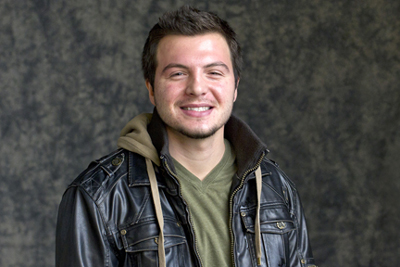
Adnan Smajic, a senior psychology major at UMSL, received a College of Arts and Sciences Research Grants.
For Adnan Smajic, a senior psychology major at the University of Missouri–St. Louis, having the opportunity to contribute to research that could save the lives of many young children is a dream come true.
Smajic, a resident of Mehlville, Mo., received a College of Arts and Sciences Research Grant. The college created a Research Grant Program this year in order to promote undergraduate research. A faculty and student review committee selected seven undergraduates to receive funds to help them complete their research activities.
Smajic’s project, “Pain Attribution and Physical Activity in Pediatric Patients with Non-Cardiac Pain,” will be overseen by Kamila White, associate professor of psychology at UMSL.
White said his work examines pain attribution and physical activity in 160 children with non-cardiac chest pain and benign cardiac conditions. Results show that children with non-cardiac chest pain are more likely to attribute their chest pain to a heart condition compared to children with a benign heart condition.
“These findings have important implications for clinical interventions,” White said. “The undergraduate grant program will afford Adnan the opportunity to deepen his appreciation of our field, expose him to modern advances in the field and to continue to build his professional skills at independence and critical thinking.”
UMSL Daily caught up with Smajic recently to talk about his research and the grant program for the third of seven Q&As featuring grant recipients.
Why does this research interest you?
Finding answers to problems is what I want to do for a living and this population (children) is very unique in that not many youthes experience chest pain, but for those who do, the experience can be quite debilitating. Thus, I find the research interesting because I feel that I am contributing to an understanding of this condition in hopes that one day we will be better able to understand and treat children with non-cardiac chest pain.
What do you hope to discover?
We wanted to investigate how this condition might affect physical activity. Our findings suggest that children with non-cardiac chest pain perceive, more so than a control, that they have a heart condition and that this condition is severe. However, we did not find the difference in physical impairment between groups we had predicted. Interestingly, all of our participants were below national guidelines for physical activity.
How do you feel about having this opportunity to do research as an undergraduate?
Honestly, I was a bit surprised that undergraduates could conduct research and be allowed to present at professional conferences. I feel very lucky to have had the opportunity to work in the Health and Anxiety Research Lab at UMSL.
Why is the Research Grant Program a good idea?
A university that fosters undergraduate research is investing not only in the students themselves, but in the quality and attractiveness of the university. This program is a wonderful opportunity for students to go above and beyond their course work and to really apply what they have learned.
What do you hope to do after graduating from UMSL?
I hope to attend a graduate program in clinical neuropsychology, but before I apply, I plan to work in a research lab to gain experience.














